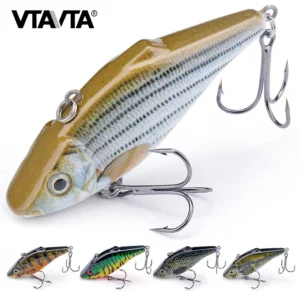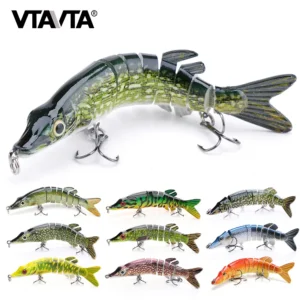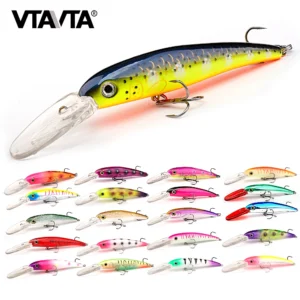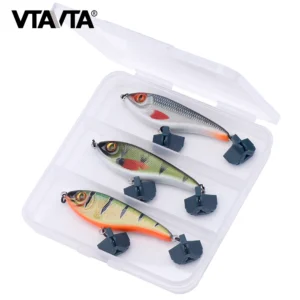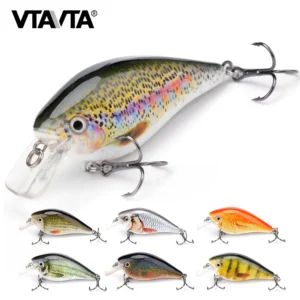The Ultimate Outdoor Workout: Calorie Burn & Muscle Engagement in Recreational Fishing
Fishing isn’t just a relaxing pastime; it’s an incredibly rewarding outdoor activity that can also give your body a serious workout. Whether you’re casting from the shore, reeling in a big catch, or spending hours on a boat, fishing engages multiple muscle groups and burns more calories than most people realize. In this article, we’ll explore how recreational fishing provides an excellent full-body workout, with a focus on calorie burn and muscle engagement, all while you’re having fun in the great outdoors.
1. Fishing as a Full-Body Workout
Why Fishing Is More Than Just a Hobby Recreational fishing may look like a peaceful and leisurely activity from the outside, but it demands physical effort and coordination. From the moment you set up your gear to the time you reel in that trophy fish, you’ll find yourself engaged in a range of movements that target your entire body.
Upper Body Strength: Casting your line repeatedly requires shoulder, arm, and wrist strength. You’re not only using your arms to swing the rod, but your core and back muscles also come into play to generate the force needed to propel your bait into the water.
Core Engagement: A strong core is essential in fishing. Every time you cast, your core stabilizes your body. Additionally, when you reel in a catch, your abs, lower back, and obliques help you maintain balance and stability, especially if you’re fishing from a boat or wading through water.
Leg and Lower Body Activation: While your upper body is doing the heavy lifting, your lower body is not left out. Standing for long periods while fishing engages your leg muscles. Whether you’re standing on a boat or on the shoreline, your legs help you maintain balance and stability, which means that your quads, hamstrings, calves, and glutes are working.
2. Calorie Burn in Recreational Fishing
How Much Energy Does Fishing Burn?
If you’ve ever wondered about the calorie burn potential of fishing, you might be surprised by the numbers. Fishing, especially in its more active forms, can burn as many as 200–500 calories per hour. While it may not seem as intense as running or weightlifting, fishing offers steady, consistent calorie expenditure.
Casting and Reeling: The repetitive action of casting your line and reeling in your bait engages muscles and burns calories. Each cast is an opportunity to work your upper body, while the continuous reeling strengthens the arms and shoulders.
Walking and Wading: Fishing isn’t all about staying in one place. If you’re walking along a riverbank or wading in shallow waters, you’re burning calories by moving your body against the resistance of the terrain. This added movement burns more calories than simply standing still.
Boat Fishing: Fishing from a boat involves even more physical effort, particularly when it comes to paddling, rowing, or maneuvering the boat to the best spot. Even standing on a boat to fish involves constant muscle engagement to maintain your balance.
3. Mental Health Benefits of Fishing
While physical fitness is a major perk of recreational fishing, the mental health benefits can’t be overlooked. Spending time outdoors in nature has been shown to reduce stress, improve mood, and help with mental clarity. In fact, many anglers find that fishing is an excellent way to unwind from the pressures of daily life.
Connection with Nature: Fishing allows you to disconnect from technology and reconnect with nature, which can have profound effects on mental well-being. The natural environment offers calm and peaceful surroundings, reducing anxiety and boosting your overall mood.
Focus and Patience: Fishing is all about patience and focus. Whether you’re waiting for a bite or adjusting your bait, it teaches mindfulness and concentration. These activities promote mental clarity and can help you develop a sense of calm and control over your surroundings.
4. The Science Behind the Workout
Calorie Burn Mechanisms in Fishing
Fishing combines strength training, aerobic exercise, and flexibility all in one activity, which is why it’s so effective at burning calories. The repetitive motion of casting and reeling provides a form of resistance training, which helps to tone muscles. Meanwhile, the walking and balancing components increase your heart rate, contributing to an aerobic workout.
According to studies, moderate-intensity outdoor activities like fishing can burn between 300 to 400 calories per hour, which is comparable to other forms of exercise like brisk walking or light swimming.
Muscle Engagement: Every muscle group is engaged during a fishing session, but the intensity of the engagement varies depending on the type of fishing. For example, fishing from a boat requires constant stability and coordination, while shore fishing may focus more on upper body and arm strength.
Active vs. Passive Fishing: The intensity of your fishing workout depends on whether you’re actively fishing (casting, reeling, and walking) or passively waiting for a bite. Both can provide different levels of physical benefits, so the more active you are, the more calories you will burn.
5. Essential Gear for Maximizing Your Fishing Workout
Just like any physical activity, the right gear can make all the difference in your fishing experience. Here are some key items to consider for a full-body workout:
Lightweight Fishing Rod: A lightweight rod reduces strain on your arms and shoulders, allowing you to cast for longer periods without getting fatigued.
Fishing Vest or Pack: A good fishing vest or pack keeps all your gear accessible while keeping your hands free for fishing. This way, you won’t have to strain to reach your tackle box, which can lead to unnecessary physical stress.
Proper Footwear: If you’re wading in a river or fishing from a boat, waterproof shoes or boots will ensure stability and prevent injuries.
Fishing Gloves: If you’re fishing for long hours, gloves can protect your hands from blisters and increase grip strength when reeling in a catch.
6. How Fishing Compares to Other Outdoor Workouts
Many people turn to running, cycling, or hiking for their outdoor workouts, but how does fishing compare? While these activities might be higher intensity, fishing provides a unique combination of physical and mental benefits that other sports can’t match.
Low-Impact Exercise: Unlike running, which can be hard on the knees and joints, fishing is a low-impact activity. It’s gentler on the body, making it a great option for people of all fitness levels, including those recovering from injury.
Full-Body Engagement: Unlike cycling or swimming, which primarily engage specific muscle groups, fishing engages nearly every muscle in your body. It provides a more well-rounded workout.
Flexibility: You can fish in a variety of environments, from lakes and rivers to oceans. Each fishing environment offers different types of physical challenges, whether it’s walking through dense forests to reach the best fishing spot or casting in windy conditions.
Conclusion:
Recreational fishing offers far more than just an opportunity to catch dinner or enjoy a peaceful day by the water. It’s an activity that provides a full-body workout, burns calories, engages muscles, and offers mental health benefits—all while enjoying the beauty of nature. Next time you grab your fishing rod, remember that you’re not just indulging in a relaxing hobby—you’re also getting a great workout! So grab your gear and head outdoors; your body and mind will thank you.

